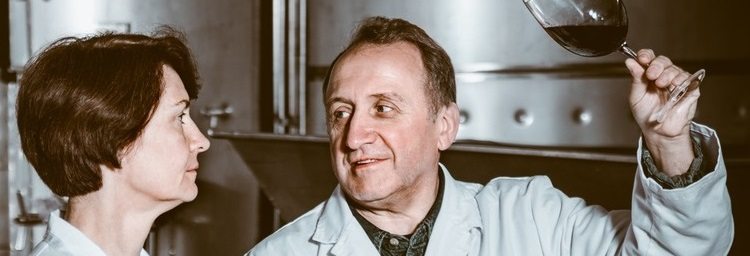Craft & Cork >> Winemaking

Getting the Most out of Wine Yeasts and Enzymes
If you’re a winemaker who is always looking to get the most out of each of your batches, and are not afraid to experiment, than this blog is for you. This week’s Craft and Cork blog will dive into the wonderful world of wine yeasts and enzymes and how we can get the most out of them during the winemaking process.
 What are Yeasts and Enzymes?
What are Yeasts and Enzymes?
Wine yeasts are grouped into the microbial group “fungi” and their primary use in winemaking is to convert grape sugars (mainly glucose & fructose) into alcohol, carbon dioxide, and flavor compounds. The two main species of yeast used in winemaking include Saccharomyces Cerivisiae and Saccharomyces Bayanus. Within the grape juice there are many different flavor compounds which are attached to sugar molecules. Luckily for us, microbiologists have been working tirelessly to isolate and identify the different strains of yeast that will release specific types of flavor compounds. These newly discovered yeast strains are usually given an alphanumeric code such as D47 or RC212 based on the laboratory of origin followed by the genotype of the yeast strain.
 Winemakers now also use post fermentation aroma and flavor enhancing enzymes to augment the varietal characteristics in Gewurztraminer, Muscat, Sauvignon Blanc and other aromatic white varieties. These enzymes will work most efficiently at temperatures between 15°C-25°C (59°F – 79°F).
Winemakers now also use post fermentation aroma and flavor enhancing enzymes to augment the varietal characteristics in Gewurztraminer, Muscat, Sauvignon Blanc and other aromatic white varieties. These enzymes will work most efficiently at temperatures between 15°C-25°C (59°F – 79°F).
RQ2017 Specialty Yeast Strains
Included in this year’s RQ17 wine kits are specially selected yeast strains which have been chosen based on their positive impact on wine aroma and mouthfeel. RC212 is a yeast strain isolated in Burgundy, France and is included in this year’s RQ17 France Cabernet Sauvignon and France Merlot. This strain has an ideal fermentation temperature range of 20°C-30°C (68°F-86°F) and has been selected because it brings out the beautiful red berry, spicy, and earthy aromas in these two grape varieties.

D47 is a yeast strain isolated in the Côtes du Rhône in Southern France and has been included in this year’s RQ17 Chardonnay and Sauvignon Blanc. This strain has a fermentation temperature range of 15°C-25°C (59°F – 79°F) and has been selected for its ability to add volume on the palate as well as accentuating ripe citrus and tropical notes on the nose.
As a general rule of thumb, if you wish to make a white wine that is fruitier with lots of tropical aromas it is best to ferment closer to 15°C (59°F). At temperatures closer to 25°C (79°F) you will produce a wine that has improved texture, mouthfeel, and body.
Now that you know a little more about these little microbes, I encourage you to roll your sleeves up and have some fun!


Recent Comments